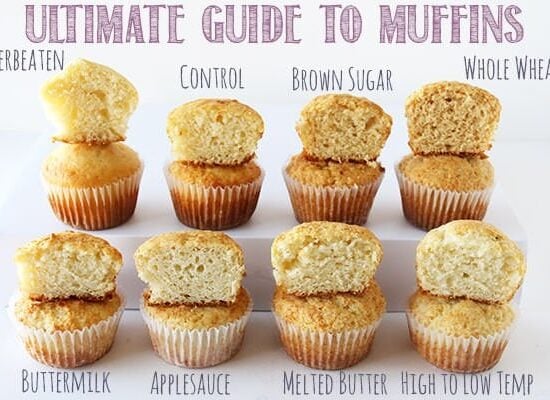
Ultimate Guide to Muffins
This post may contain affiliate links. Read our disclosure policy.
It’s been quite a while since I’ve created a new Ultimate Guide post so I figured it was time to get experimenting and make another huge mess in my kitchen in pursuit of recipe perfection!
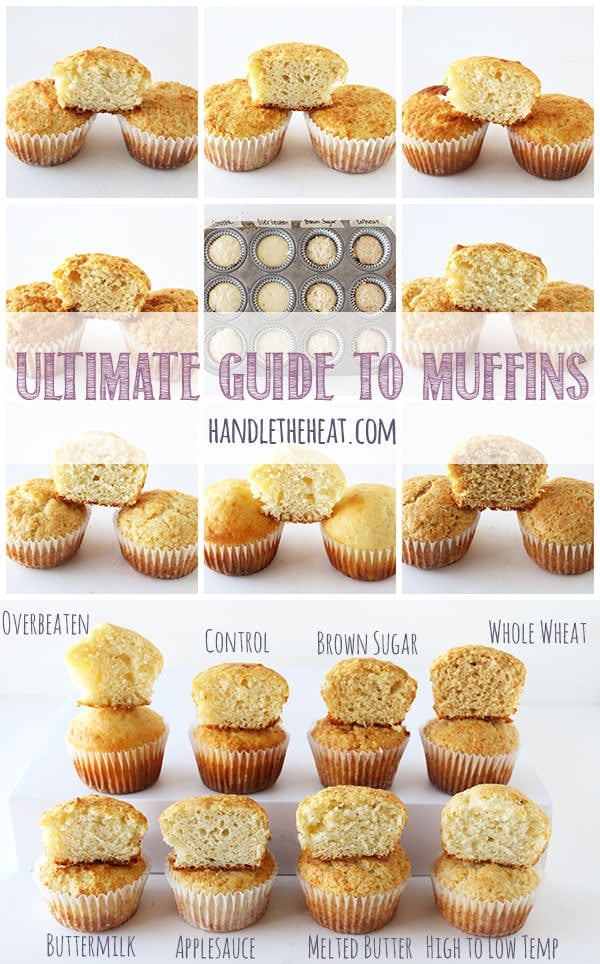
I do these posts, which may make me seem like a lunatic baker to anyone watching, because I think that actually seeing and reading about how a single ingredient or technique can impact a baking recipe is SO immensely helpful. Based off your feedback, it seems like you guys find these posts helpful too! I believe everyone should be able to create their ultimate version of any recipe, that baking shouldn’t be a source of confusion or frustration, and I want to help you by sharing my experiments.
So today I’m diving into the magnificent world of muffins. I’ve had a few requests for an Ultimate Guide to Muffins and I’m happy to say it was such a blast to experiment with them! If you’ve ever had questions about muffins, or wondered why your muffins turn out too short, crumbly, dry, bland, etc., you’ve got to read this post! Some secrets to ultra tender, moist, flavorful, and beautifully tall muffins are just below.
Tools and Ingredients Used:
I made every effort to replicate each batch as perfectly as possible, using the same exact tools and ingredients whenever applicable. I used a food scale to measure ingredients to ensure 100% accuracy and used an oven thermometer to gauge exact baking temperatures. Each batch was baked for exactly 20 minutes, except the high to low temperature batch which I’ll get to in a moment. I used paper liners for each batch and coated them with nonstick baking spray to ensure the muffins wouldn’t stick.
–Chicago Metallic Uncoated Standard Muffin Tin
-Large (3-Tablespoon) Spring-Loaded Cookie Scoop
–Oven thermometer
–Escali Digital Food Scale
–Best Quality Reynold Standard White Cupcake Liners
–Pillsbury No-Stick Baking Spray with Flour
-Gold Medal All-Purpose Flour
-Table salt
-Large eggs
-Whole dairy milk
Control Recipe
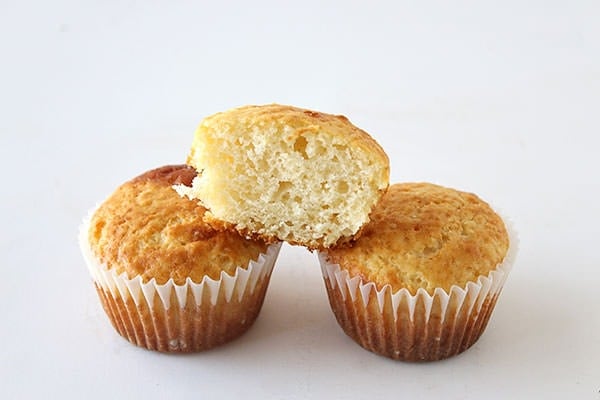
Whenever I do these Ultimate Guide experiments, I base every experimental batch off one control recipe that I feel represents the most basic and standard recipe possible and the same goes for this muffin control recipe. I decided to bake just plain muffins, with nothing mixed inside to give the most pure results. Every batch following this control will include one small change, keeping everything else the same so we can see how that change impacts the final result.
Yield: 12 muffins
Ingredients:
2 cups (254 g) all-purpose flour
½ cup granulated sugar
½ teaspoon fine salt
1 tablespoon baking powder
1 cup whole milk
¼ cup vegetable oil
1 large egg
Directions:
Preheat the oven to 400°F. Line a standard muffin tin with paper liners or coat with nonstick cooking spray (or both).
In a large bowl combine the flour, sugar, salt, and baking powder. In a liquid measuring cup beat together the milk, oil, and egg. Pour into the dry ingredients and stir JUST until combined, do not overmix. Divide evenly among the muffin tin cups. Bake for 20 minutes, or until golden brown and a toothpick inserted in the center comes out clean.
Overbeaten

When it comes to mixing up a muffin batter, things couldn’t be simpler. Muffins are easy peasy. Yet, there is one rule that can make or break your muffins: do not overbeat. You can stir the dry ingredients and the wet ingredients separately as much as your heart desires, but once they’re combined you should only beat until they are JUST combined. Streaks of flour remaining is actually fine. So I wanted to try out a batch where I intentionally over-beat the batter to show you the results, so you can understand exactly why this rule exists.
As you can see right off the bat, these muffins are by far the tallest with the most dramatic domes. They are also the most pale in color. While they make look nice and tall and smooth (almost like cupcakes), these muffins were dry and they were dense. Not pleasant at all. If there were any questions about overbeating muffin batter, I think these muffins here answered them. Don’t do it unless you want dry little hockey puck muffins!
High to Low Baking Temperature
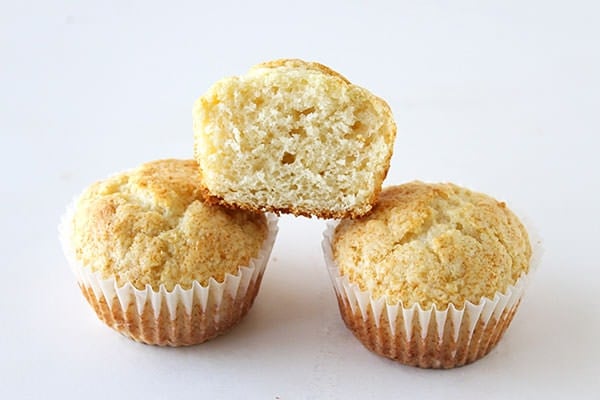
This batch was based off a few pins I’ve seen floating around Pinterest that show how much taller and domed muffins and cupcakes are if you start them off in a hot oven then turn the temperature down slightly. This made sense to me in theory, knowing that baking powder is partly activated by heat. So for this batch I took the control recipe and started it off by baking for 5 minutes at 450°F, then turned the temperature down to 400°F and continued baking for slightly less than 15 minutes. These muffins were beautifully tall, attractive, moist, and soft. Win!
Brown Sugar
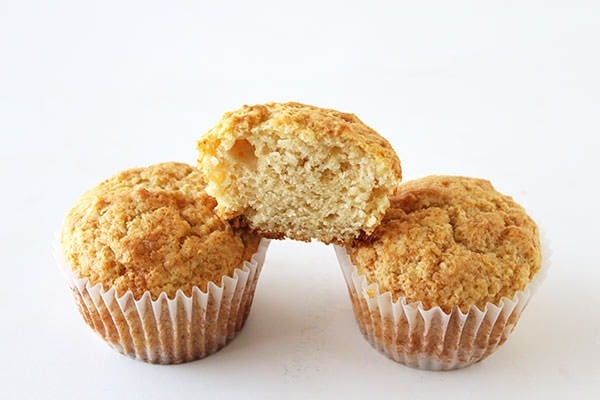
For this batch I removed the 1/2 cup granulated sugar from the control recipe and replaced it with 1/2 cup packed light brown sugar. The resulting muffins were slightly darker, with a more craggy rough appearance which made for a slightly crunchy exterior which I quite enjoyed. Not to mention the flavor was really nice and well rounded. I liked the brown sugar muffins a lot!
Whole Wheat
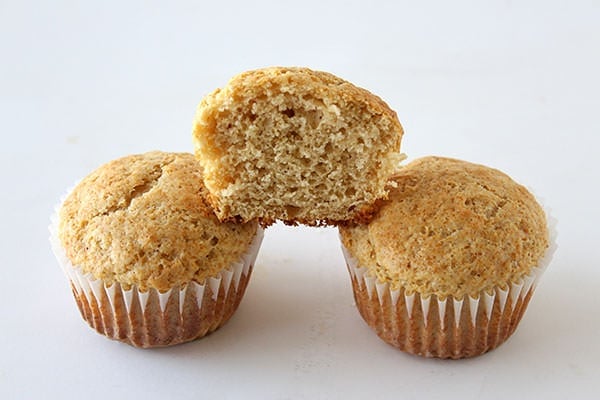
I decided testing out a batch of whole wheat muffins would be interesting. Since muffins are often eaten for breakfast, I wanted to see if it was possible to make them a little bit lighter and “skinner.” So I removed all the 2 cups of all-purpose flour and substituted in 2 cups of King Arthur White Whole Wheat Flour. I used white whole wheat flour because it has the same nutritional value as regular whole wheat with a more subtle wheat flavor, perfect for muffins in theory. These muffins were definitely darker, I was actually surprised by how dark they were considering I used white whole wheat flour.
This batch had a lovely tall domed top with a firm, slightly crumbly texture and slightly nutty flavor. Overall the result was good, though if I were to make muffins with white whole wheat flour again I’d probably add a touch more liquid since wheat flour absorbs more moisture. These muffins were lacking just a bit of moisture.
Buttermilk

The control recipe calls for 1 cup of whole milk, so I was curious to see how switching that out for 1 cup of buttermilk would impact the muffins. The buttermilk muffins had a finer crumb texture, meaning they weren’t as loose and filled with holes. However, they were SUPER moist and flavorful. I absolutely loved this batch and don’t think I’ll make muffins without buttermilk again, which surprised me. I didn’t think I’d be such a huge proponent of buttermilk because it means grabbing an extra ingredient at the store, but it’s so worth it!
Learn more about the science of baking with buttermilk here.
Applesauce
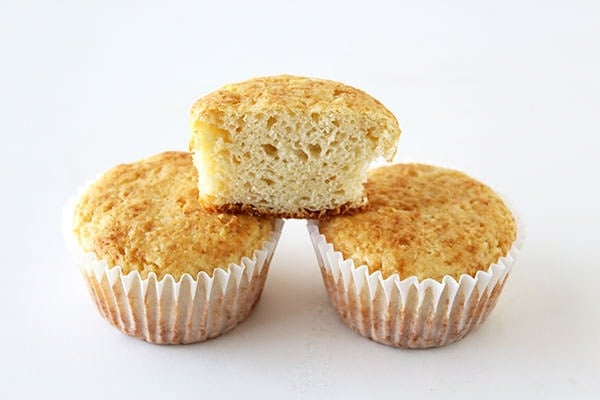
For the last 2 experiments I wanted to play with the fat in the control recipe, the 1/4 cup vegetable oil. First I wanted to see if I could again make the muffins a little lighter by substituting the oil with 1/4 cup plain (unsweetened) applesauce. I really thought this would work wonderfully, but was sadly surprised by how tough and strangely chewy these muffins were. Since there is a relatively small amount of oil in muffins, I think I’ll stick with normal fat. Using applesauce, at least in this way, was not worth the nutritional payoff at all. Muffins should not be chewy!
Melted Butter
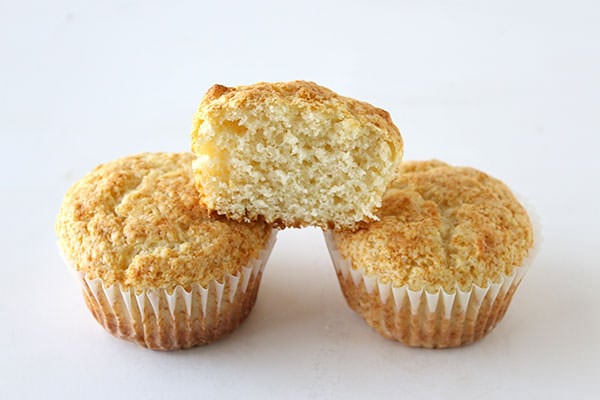
After the sad applesauce batch, I wanted to see if using butter instead of oil would possibly improve the control recipe. I melted 4 tablespoons of unsalted butter to replace the oil, proceeding with the recipe normally. The melted butter muffins were beautifully moist and had wonderful flavor. It was a win!
Side-by-Side Comparison:
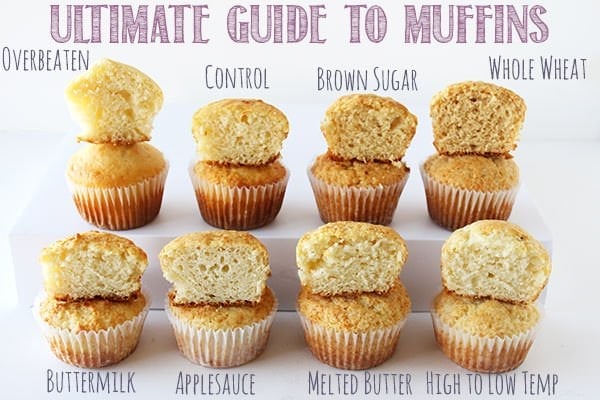
So which was the best?
The buttermilk muffins were my favorite, though overall all the muffins were pretty bland since there were no mix-ins! I also really liked the effect of the high to low temperature method, and will absolutely be using that for muffins and cupcakes in the future. Stay tuned for this Friday, I’ll be sharing my Ultimate Muffin Recipe based on the results of my experimenting! Which would be your favorite? How do you bake your muffins?
More Ultimate Guides:
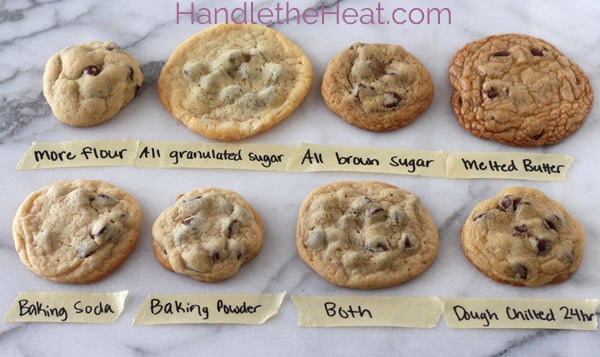 Ultimate Guide to Chocolate Chip Cookies
Ultimate Guide to Chocolate Chip Cookies
*This post contains affiliate links.
About Tessa...
I share trusted baking recipes your friends will LOVE alongside insights into the science of sweets. I'm a professionally trained chef, cookbook author, and cookie queen. I love to write about all things sweet, carb-y, and homemade. I live in Phoenix, Arizona (hence the blog name!)
Leave a Comment & Rating
Add a Review or Question
© Handle the Heat - handletheheat.com
Join the Handle the Heat Community
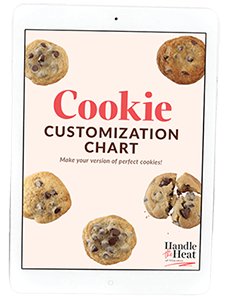
Instead of digging through cookbooks and magazines and searching the internet for amazing recipes, subscribe to Handle the Heat to receive new recipe posts delivered straight to your email inbox. You’ll get all the latest recipes, videos, kitchen tips and tricks AND my *free* Cookie Customization Guide (because I am the Cookie Queen)!

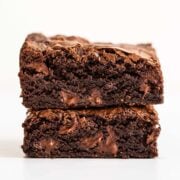
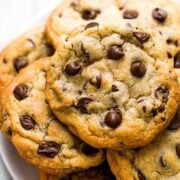
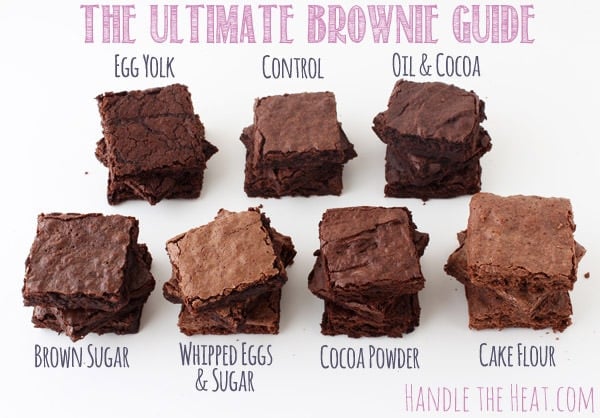 Ultimate Brownie Guide
Ultimate Brownie Guide Ultimate Cupcake Guide
Ultimate Cupcake Guide


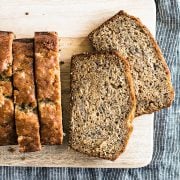
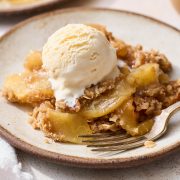
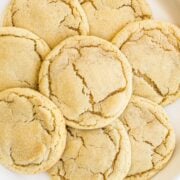
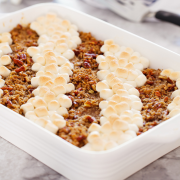

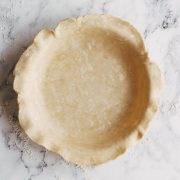
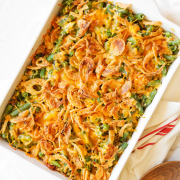
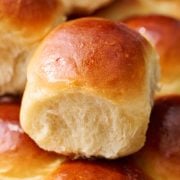
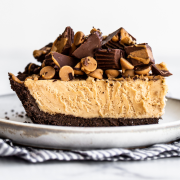

Thank you Tessa, I appreciate your test and am going to try them. The cake, soft muffins are not to my liking so I have been looking for a better texture. That is how I stumbled on your guide. Just what I needed.
Thanks again.
Great! Please let us know how your baking goes, I’m excited for you to try this recipe! There are so many wonderful add-ins to choose from 🙂
This is so helpful. Thank you very much for putting this all together. It helped with my muffins this morning, and I plan to use your cookie guide on the weekend.
Happy to hear this!
This is very helpful. To make flavoured muffins do you just add fruit?
I talk about all the different customization options in this post here: https://handletheheat.com/ultimate-muffins/ Have fun!
wonderful tips, thank you!
Download of the Muffin freebie is not completing.
I would like to know what happen is you use other substitute for flour. Like 50% wheat flour and 50% corn flour (other other types of flour like potato flour) Since these have less gluten.
The guides you make are precisely why You are my only ‘follow’ subscription. As a scientist, I can appreciate one variable at a time to problem solving. Tesa, you are generous, thoughtful and your recipes so far have always performed exactly as expected.
Please keep up the terrific work and thank you for the guides.
Thanks for the testing and showing the results
in an easy manner (comparison photo graph) to understand.
Food needs to look as good as it tastes and vise visa.
Thanks for the testing and showing the results
in an easy manner (comparison photo graph).
explain why with these changes, the results obtained are different from the control recipe?
Hi! Hoping you can help me with Appe Crumble Muffins. I recently made these and while they turned out really nice with a crumble topping, they seemed to be a little undercookd or soggy on the inside. I’m afriad if I left them in for a little longer in the oven, the muffin will burn or dry out. I toss and mix the dry ingredients together, then coat the diced apples evenly before mixng it to the wet mixture. All good, then I baked at 175 in a gas Chef oven f r 25 minutes. All looked perfect but when cooled the muffins seemed to be rather moist on the inside appearing uncooked. How can I fix this?
This is soooo helpful – thanks!!
So here is the intimate muffin question…could you make these muffins with several of the subs? Like buttermilk, brown sugar, and butter? That seems like the worlds best muffin!
Why are my muffins always dry and hard to chew?
Do you think it is safe to make three of these changes at once? Buttermilk, butter and the temperature?
I follow the recipe. Most of the muffins seem to “blow out” the sides.
What am I doing wrong?
Thanks.
Thank you for this helpful information. I like to know the why and how about baking. Love to bake. So thanks again.
Tessa: Thank you for your great baking tips. I also test recipes and am always looking for new information from my fellow bakers. I tested a recipe for Maple Pecan Muffins. I experimented with the “paste” method for combining the flour,butter and sugar. This method works great for my pound cake and bundt cake recipes! This muffin came out a bit dense and dry. I used King Arthur White Whole Wheat flour. A bit of advice from you would be greatly appreciated. Thanks so much! Here is the test recipe:
Please contact me at [email protected]
MAPLE PECAN MUFFINS:
2 cups white whole wheat flour, I like King Arthur Flour
1/2 cup unsalted butter, chilled, cut into 16 pieces
1/2 cup light brown sugar
1 1/2 teaspoons baking powder
1/4 teaspoon kosher salt
1 large egg
1/2 cup pure maple syrup
1/2 cup 2% milk
1 teaspoon pure vanilla extract
1/2 teaspoon pure maple flavor
1 cup pecans, divided, coarsely chopped
canola cooking spray
HOW TO:
1. Preheat the oven the 375 degrees. Line 12 regular muffin cups with paper liners.
2. To the bowl of a stand mixer, add the flour, butter, brown sugar, baking powder and salt. On low speed, mix just until crumbly and most of the butter has disappeared, about 1 minute.
3. In a large mixing bowl, whisk together the egg, maple syrup, milk, vanilla extract and maple flavor. On low speed, slowly add to the flour mixture. Mix just until combined and smooth, about 1 minute.
4. By hand, stir in 3/4 cup chopped pecans. Fill each muffin cup 3/4 full. Top with the remaining 1/4 cup chopped pecans. Lightly spray the tops with cooking spray. Bake for 15-20 minutes or until nicely risen and a tester comes out clean. Let cool in the pan 10 minutes and then remove to a rack to cool completely before storage.
I read your information and applied it to a blueberry muffin recipe… i made several substitutions based on what you said and they came out so great, but of course not perfect… i made with butter and only a splash of oil for richness, and i felt my batter was too dry so i added extra milk… they were wonderful but the tops wanted to come off the bottom every time they were moved… prob need to leave the batter a little on the drier side.
Thank you and please look out for vid on twitter @EL_PROFESSORI.
I found this very helpful and could immediately identify what went wrong with my most recent batch of muffins.
My family is vegan and I try to stick to vegan recipes as I know the replacement retios can be a bit tricky but I will admit, even with that guidance, vegan baking is a challenge. It would be great if you did a post on vegan baking with different egg replacers, ground flax, apple sauce etc. Would love to see the side by side comparisons.
Like somebody upfront said – how useful to see/read how a mixture works, this is so helpful! With so many recipes available, this is the first and best site where to analyse results.
How to take your recipe and make different kinds of muffins such as banana muffins
Listen up everyone, “low-fat” is no good! Everyone is overlooking the major difference between healthy fats and unhealthy fats. Saturated and unsaturated fats help you lose weight, it’s trans fats and carbs that make you gain weight! Examples of good fats are egg yolks, real butter, milk fat, unrefined oils (extra virgin), lard, nuts, olives, avocados and fish. Examples of bad fats are Crisco, canola oil, “vegetable” and frying oil, cooking spray, margarine, and oleo. Also keep in mind that animal products are very sensitive to how the animal was raised and what it was fed. Ensure that your animals are not treated with or fed any antibiotics or hormones, that they are organic, free range, and grass fed with dairy. Having sick animals (anything from the grocery store) means unhealthy milk, butter or eggs. People used to cook with lard and there were no pesticides or margarine, and they were FAR healthier and lived much longer. Since the invention of hydrogenated oils we’ve become scared of fat and because of it we are all suffering. I encourage everyone to look into these subjects because I care deeply. Thanks for the wonderful muffin guide, I’d like to see muffins baked with brown sugar and buttermilk using the high to low heat method! Thanks for reading.
Love this! Thank you
I’m a little late to the party, but I love what you’re doing here! Im always making up my own recipes and modifications, but I also lack in baking chemistry knowledge! So this is very helpful.
Hi!
Thank you for this guide, it has been so helpful! Question for you though — I made a batch of muffins recently using a very similar base (2c flour, 1c milk, 1Tbs baking powder, etc.). However, about two days later my muffins turned terribly bitter! Do you have any reason why this might’ve happened, and/or any troubleshooting tips? Thank you! 🙂
My daughter made a batch of muffin so I am unsure of what ahe did wrong. But the top of the muffins are completely holey, like honeycomb looking.
I read somewhere that allowing the muffin dough to rest for a bit before scooping and baking also helps. What is your experience with this?
Hello. Would you happen to know reasons for some cupcake/muffin liner problems?
First of all, peeling of the liner? I let my cupcakes/muffins sit for 5min after baking in the tin before removing and sometimes they peel.
Secondly, bottom of the cupcake/muffin is hollow. Baking started about 1/2 centimetre up from the bottom of the tin. The bottom 1/4 of the cupcake/muffin is typically raw looking (not as fluffy as the top).
Lastly, the last problem I sometimes see is that the liner sucks in at the sides.
I am not sure why this sometimes does or doesn’t happy. Any help would be great.
Thank you 🙂
Thanks for sharing this information–being able to see each muffin variation helps a lot! I absolutely agree about the buttermilk. It improves texture and has the added benefit of less fat than whole milk. (It does change the acid/base balance of the batter, though–something to keep in mind when adding other ingredients.)
A word on using applesauce: its high water content means that evaporation will cause baked goods to rise before the interior is set enough to either support the rise or hold the moisture. The result is a dry, chewy texture. To make it work, reduce the temperature by 25°F and the baking time by 5-10 minutes.
Hi Tessa, love your site btw! I recently made double chocolate muffins which called for plain yogurt and milk as well as oil. They were a bit dry though. What can I do to ensure they’re moist next time around since the chocolate flavor was really nice and rich?
Measure your flour by weight! It’s really easy to accidentally add too much when measuring with measuring cups.
This guide is awesome. Thank you so much for all of the info. Now I know why the one time I made muffins with applesauce were disgusting. I have a question about substitutions between yogurt and sour cream. How would that work like for instance you have one as opposed to the other.
Yogurt and sour cream swap out really well. The sour cream will be a tad richer and tangier in flavor, but that’s a super easy sub 🙂
Hi Tessa!
I want to know if it’s possible to sub the all-purpose flour for self-rising and if so would I still use the same quantity flour minus the baking powder of course.
My son-in-law and one grandson are allergic to dairy. I substitute almond milk. The flavor is fine but sometimes the texture is not as soft. Any suggestions?
My muffins are forming a “hill” in the centre, not a gentle mound, butt a pointy hill, what I theproblem?
I stumbled upon this while searching for best temperature to bake muffins. Great tips and I love the side by side comparisons! Thank you for sharing this information! Awesome!
Some of my favorite recipes call for buttermilk, but it doesn’t keep well, and I never had it when I needed it. Many years ago I started using the buttermilk powder, which worked really well. Then I read a tip in a magazine about a great substitute that I have been using ever since – vinegar. In place of 1 cup of buttermilk, add 1 tablespoon of vinegar to 1 cup of room temperature milk and mix well. Let sit for 15 minutes, stir again. Use as you would buttermilk. Always handy, always convenient, cheaper than buttermilk. Plus, these days it’s hard to find a buttermilk that is not low fat, so by using the vinegar trick, you can use whole milk for a richer, tastier result. Try it, it’s great!
PS – lemon juice works just as well as vinegar.
Thank you for your wonderful guides. Our local bakery makes THE BEST blueberry muffins ever! They have the high dome and the top is a nice hard crunchy texture. How can I duplicate that texture? Most restaurants have a sticky, tacky texture to their muffin tops . . very unappealing.
This is definitely a forever post! For me, your post here is forever relevant and excellent. I just went through a failed batch of muffins and was doing research on how to solve my particular problems when I ran across your site. Just wanted to thank you so much for taking the time to test and publish your results with wonderful comments. I’m encouraged to try muffins again– today.
Thank you so much for this guide. I just made a batch of failed muffins and now I know why. Part me and part the recipe. Thanks again
Awesome, Christina! It’s always nice to figure those things out so they don’t happen again 🙂
Thank you!! I really appreciated understanding the ‘why’. Very informative!
Thanks so much for this post, I just baked a batched of muffins on the weekend with less oil than mentioned in the recipe and my muffins came out dry, so next time I will add buttermilk. Thanks for sharing.
Good luck!
Tessa, thanks so much for sharing your recipes and all the information from your experiments.
I am a grandmother who has always enjoyed cooking. I am self taught
and find cooking for family and others very creative and loving. I appreciate so much your
wisdom and generous spirit.
Thank you so much for taking the time to do these posts. they are super helpful. I have been trying to work with whole wheat in my baking lately and while researching I found that if you let your batter set for ten to twenty minutes it gives it times to soak up the moisture making your baked good not so grainy.
Hi, I wanted to try using buttermilk in my muffins as you have but wondered of the changes to the acidity. Would I need to replace some of the baking powder with baking soda? Thank you.
Tried the buttermilk version.
Buttermilk is a MUST for cornbread also. My husband has a gluten sensitivity, so I substituted an all-purpose GF flour and followed the recipe exactly. Definitely a winner – leftovers were a nice topped with jam or jelly.
Thank you…
I love your ultimate guides. Can you do an ultimate guide for pizza dough?
This is great!! Love the comparison – I usually bake mine on a higher temp for the first 5 minutes then lower for the rest – and they come out looking like yours, that high top and slightly cracked. Definitely seems like the best method for muffins. Instead of oil though, I usually use yoghurt and they come out delightfully moist and soft, but I think I’ll try out using oil next time to see if there’s any difference! Thanks for another great ultimate guide!! 🙂
I love your ultimate guides! I was wondering if you could try substituting the oil for yogurt and see how that compares. My friend swears by this and after the buttermilk bran muffins my college friends dad used to make us, they are the best I’ve had. She lets the mixture sit for awhile before adding the dry ingredients. Thanks Tessa, I love following your blog, you provide great info as well as awesome recipes!
Love this!!
Thank you very much for this side by side comparison. It helps to know right away (in one recepie) what works and what does not. These are articles are awesome, keep up the good work!
I love the ultimate guides! Having pictures of everything is so helpful!
This is super informative, I really enjoyed seeing the difference between them all. Thanks for this!
This ultimate guide is so great! I was recently googling “what makes a perfect muffin” to find out what the consensus is and I found that people tend to prefer all different textures of muffins. I prefer light and fluffy, but some people insist muffins be dense. Your guide helps me understand how different ingredients/techniques actually influence the final product!
I love your ultimate guides! I don’t have the time I would like to cook and bake and experiment myself. You save me that time and improve my baking. Thank you, thank you, thank you not only for investing the time but sharing what you have learned.
I absolutely love posts like this, I’m the sort of person that wants to understand why a recipe works rather than just following the steps so this is perfect. Thanks for sharing as I know it must have taken a lot of time and effort to write.
Hi! Sorry for my deep ignorance (I’m Italian and muffins & co. don’t belong to my traditional pastry baking), but what is actually the difference between a muffin and a cupcake? Is it only that the cupcake is supposed to be frosted?
Thanks!
There really is no technical difference between a muffin and cupcake. Typically a cupcake is made by beating the butter and sugar together, while muffins are made by just stirring the ingredients together however even then there are many exceptions. And yes, cupcakes are traditionally frosted and muffins aren’t.
My muffins are similar to yours with a couple of changes. We’re trying to reduce a bit of calories and fat, so here is what I do: 2 eggs, but only 1 TB of canola oil. Instead of a 1/2 cup of sugar, I use about a TB less.
High heat (500deg) dropped down to 400 for the usual 20 minutes.
The results are that they are well baked and not dry. The taste is terrific, you don’t notice the smaller amount of sugar. Where there seems to be a difference is in the texture on the first day. Because of the lesser amount of oil, the outside of the muffins is a bit tough. But, put them in a zip-lock bag when they’ve cooled off and in a few hours, they are wonderful. Plus, I like that the texture is not that of a cupcake but of a muffin. It’s not a bad solution to watching calories and such. I figured out one day, that, barring add-ins, the average calorie of a muffing is approx 150 calories. Pretty good.
Sweet retarded Jesus, just eat a couple more salads once in a while and let the muffins be muffins. Cutting the sugar by 1 Tablespoon (c. 50 cal.) per batch and oil by 3 Tablespoons (c. 330-360 cal.) might save you 25-35 calories per muffin (aka, 1/2 a grapefruit), but using canola oil is a poor choice since at least 90% of it is GMO and highly processed using harsh chemicals and partial hydrogenation (which means more trans fats). Avocado or olive oil would be a better choice… and if you really are that nuts about your health that you think cutting 4 calories of sugar out of a muffin is a major victory, you might as well go all-organic while you’re at it and cut make that kind of effort to avoid GMO and processed food ingredients.
No reason to be fuckin bitter mate.